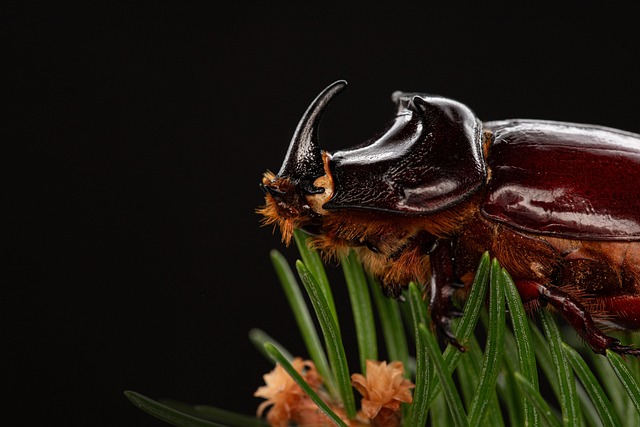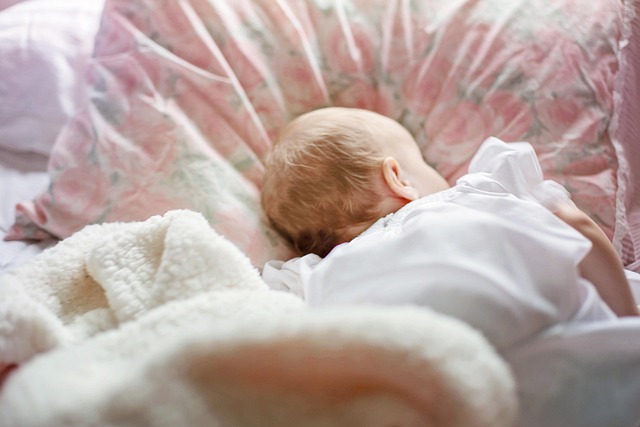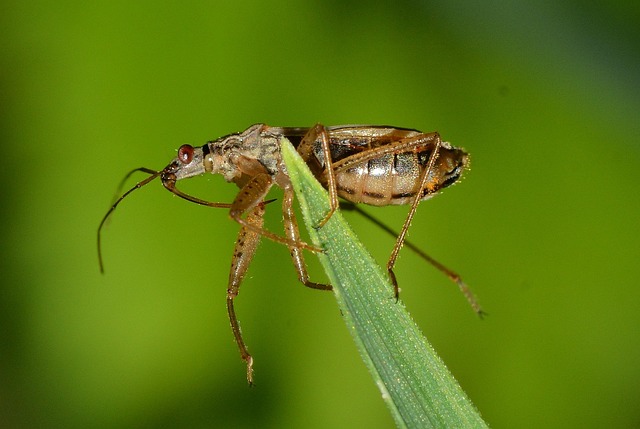TL;DR:
Bed bug heat treatment is a safe, eco-friendly, and highly effective method for eliminating bed bugs from homes, businesses, and institutions. Using precise high temperatures (120-150°F / 49-66°C), it kills bed bugs, eggs, and larvae across all life stages. This non-invasive process takes a few hours, is quick, and leaves no harmful residues. Ideal for sensitive environments, it provides long-lasting pest control and prevents resistance development.
Preparation includes decluttering, vacuuming, sealing cracks, and containing beds in plastic bags. The treatment involves specialized equipment raising temperatures steadily, ensuring even heat distribution. Post-treatment, thorough inspection is crucial, followed by aftercare steps like cleaning with hot water, regular vacuuming, and monitoring services to prevent reinfestation.
Keywords Used: Bed Bug Treatment
“Discover an effective and efficient solution to your bed bug problems with our comprehensive guide on Bed Bug Heat Treatment. We explore every aspect of this innovative approach, from understanding the method to its numerous advantages over traditional treatments. Learn how heat works as a powerful tool against these pesky invaders, and get practical tips for preparation and aftercare. By the end, you’ll be equipped with knowledge to make an informed decision about choosing Bed Bug Heat Treatment as your go-to solution.”
Understanding Bed Bug Heat Treatment: A Comprehensive Overview

Bed bug heat treatment is a specialized and effective method for eliminating these persistent pests from homes, businesses, and institutions. Unlike traditional chemical treatments, which can leave behind residues and potential health risks, heat treatment offers a safe and environmentally friendly solution. During this process, high temperatures are used to kill bed bugs at all stages of their life cycle—eggs, nymphs, and adults. The method ensures thorough coverage, reaching areas that chemicals might miss, making it particularly effective for heavy infestations.
This comprehensive approach involves precise temperature control and targeted application of heat to affected spaces. Professional exterminators use specialized equipment to raise the ambient temperature to levels that are lethal for bed bugs but safe for humans, pets, and most materials. Heat treatment is a non-invasive method that doesn’t leave behind harsh chemicals, making it ideal for sensitive environments and those seeking long-lasting pest control solutions. It’s a game-changer in the world of bed bug treatment, providing a fast, efficient, and safe way to regain control over infested spaces.
How Does Bed Bug Heat Treatment Work?

Bed bug heat treatment is a highly effective method for eliminating these pesky pests from homes and businesses. It works by using extreme temperatures to disrupt and destroy bed bugs at all stages of their life cycle. Heat treatment involves raising the ambient temperature in the infested area to levels that are fatal to bed bugs, typically between 120-150°F (49-66°C). This process is carefully controlled to ensure safety for residents and pets while effectively killing bed bugs, eggs, and larvae.
During a heat treatment, specialized equipment distributes hot air evenly throughout the space, ensuring every nook and cranny is reached. This method is particularly useful because it doesn’t rely on chemicals, making it a safer alternative for sensitive environments. It’s also quick, typically taking just a few hours to complete, and can be highly targeted, allowing for treatment of specific rooms or areas instead of an entire property.
Benefits of Choosing Heat Treatment for Bed Bugs

Heat treatment is an effective and efficient method for eliminating bed bugs, offering several advantages over traditional chemical-based solutions. Firstly, it provides a non-toxic approach to pest control, making it safer for both residents and pets. This is particularly beneficial in homes with young children or individuals with allergies or sensitivities to pesticides. Heat treatment ensures that all stages of the bed bug life cycle, including eggs, nymphs, and adults, are eradicated, leaving no chance for survivors to develop resistance as can sometimes occur with insecticides.
Additionally, heat treatment is a swift process, allowing for quicker resolution of bed bug infestations. It can be completed in a single visit, targeting the entire affected area. This method also reduces the risk of re-infestation, as it eliminates the bugs and their hiding places at the source. Moreover, it offers long-lasting results, providing peace of mind for homeowners who may have concerns about future infestations.
Preparing Your Home Before Bed Bug Heat Treatment

Before bed bug heat treatment, preparing your home is crucial for effective pest control. This involves decluttering spaces, as bed bugs thrive in cluttered environments. Remove all unnecessary items, especially those that can hide bugs or their eggs, such as clothing, furniture, and boxes. Vacuum thoroughly to eliminate any visible signs of bed bugs and dust, which can harbor them. It’s also essential to inform everyone living in the household about the treatment process to ensure cooperation and prevent reinfestation.
In addition, fix any cracks or gaps in walls, floors, and doors to limit bed bug access points. Remove or seal off any openings where utilities enter your home, like pipes and wires. Disassemble beds and take them out of the room to be treated, securing them tightly in plastic bags if possible. This step helps contain the bugs during the heat treatment process, ensuring a more successful Bed Bug Treatment.
The Process: Step-by-Step Guide to Heat Treatment

The Process: Step-by-Step Guide to Heat Treatment
Heat treatment for bed bugs involves a meticulous process designed to eradicate these pesky intruders from your living space. It’s a non-chemical method that uses temperature extremes—typically above 120°F (49°C)—to kill bed bugs and their eggs at all stages of development. Before starting, prepare the affected area by vacuuming to remove visible debris and dust. This step is crucial as it helps to expose bed bugs and ensures better heat penetration.
Next, seal off the treatment area with plastic sheets or bags to contain the heat and prevent bugs from escaping. Professionals use specialized equipment like heating units or ovens to raise the temperature steadily. The heat is then circulated throughout the room, ensuring even exposure. This process can take several hours, depending on the size of the area and severity of the infestation. After cooling down, thoroughly inspect the space for any surviving bed bugs, as re-treatment might be necessary if any are found.
Common Misconceptions About Bed Bug Heat Treatment

Many people hold misconceptions about bed bug heat treatment, often due to lack of information or misinformation. One common myth is that heat treatment isn’t effective for eliminating all bed bugs and their eggs. While it’s true that extreme temperatures are lethal to bed bugs, not all areas of a contaminated space reach these levels during standard heat treatments. Another misconception is that heat treatment doesn’t leave behind any harmful residues, which is incorrect. Proper heat treatment does involve raising the temperature to dangerous levels for bed bugs, and subsequent cooling cycles must be managed carefully to prevent damage to fabrics and other materials.
Additionally, some believe that bed bug heat treatment is overly expensive and time-consuming. While it can be more intensive than chemical treatments, professional heat treatments are often faster and more efficient in the long run, as they require fewer repeat visits. Moreover, many people wrongly assume that heat treatment doesn’t offer lasting results. In reality, when executed correctly, bed bug heat treatment can significantly reduce or eliminate bed bug populations, providing a longer-lasting solution compared to chemical applications that may need recurring treatments over time.
Aftercare and Maintenance Following Heat Treatment

After a bed bug heat treatment, proper aftercare and maintenance are crucial for preventing reinfestation. This includes thoroughly cleaning all affected areas with hot water and soap to eliminate any remaining eggs or nymphs. Vacuuming regularly helps remove any adults that may have survived the initial treatment. It’s also recommended to seal cracks and crevices in furniture and walls to limit hiding spots for bed bugs.
Additionally, maintaining a clean living environment is essential for long-term success in bed bug treatment. Regularly changing bedding, washing clothes in hot water, and avoiding contact with second-hand furniture can significantly reduce the risk of recurrence. Professional monitoring services can also be employed post-treatment to ensure any new infestations are detected early, allowing for swift action using effective Bed Bug Treatment methods.
